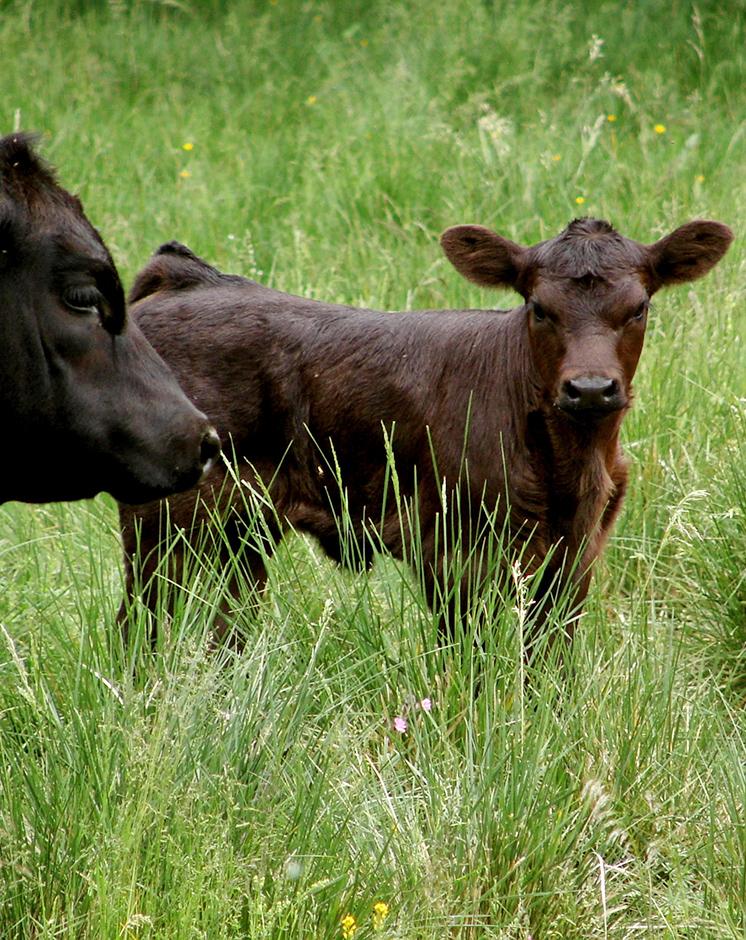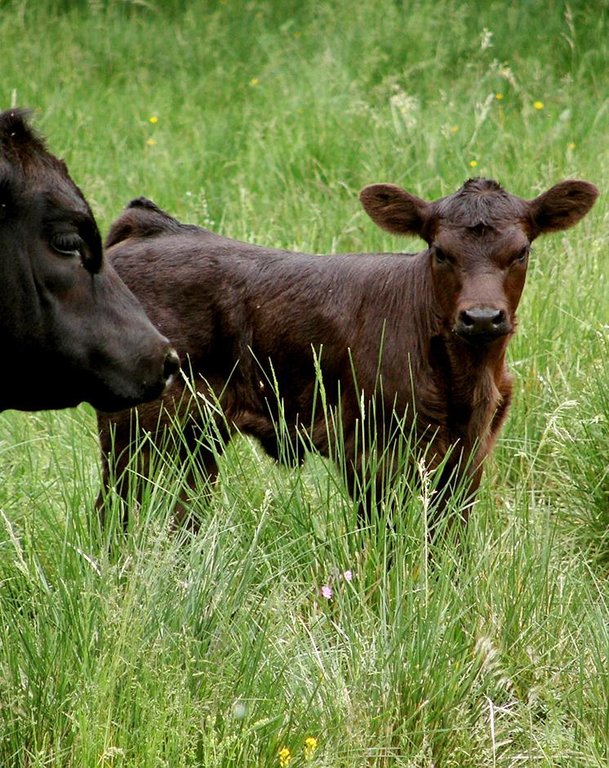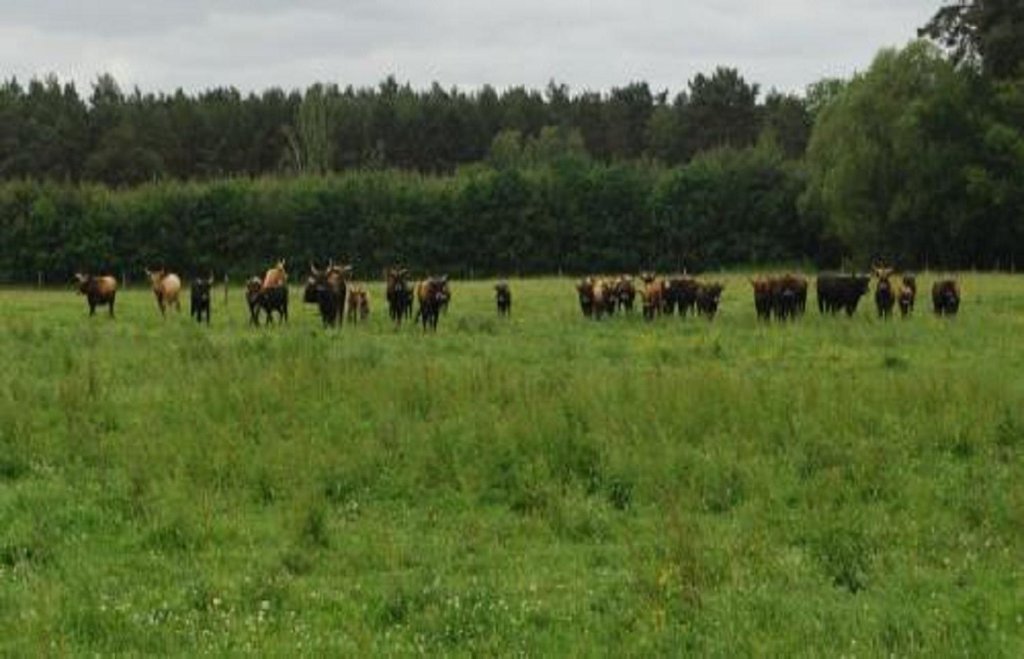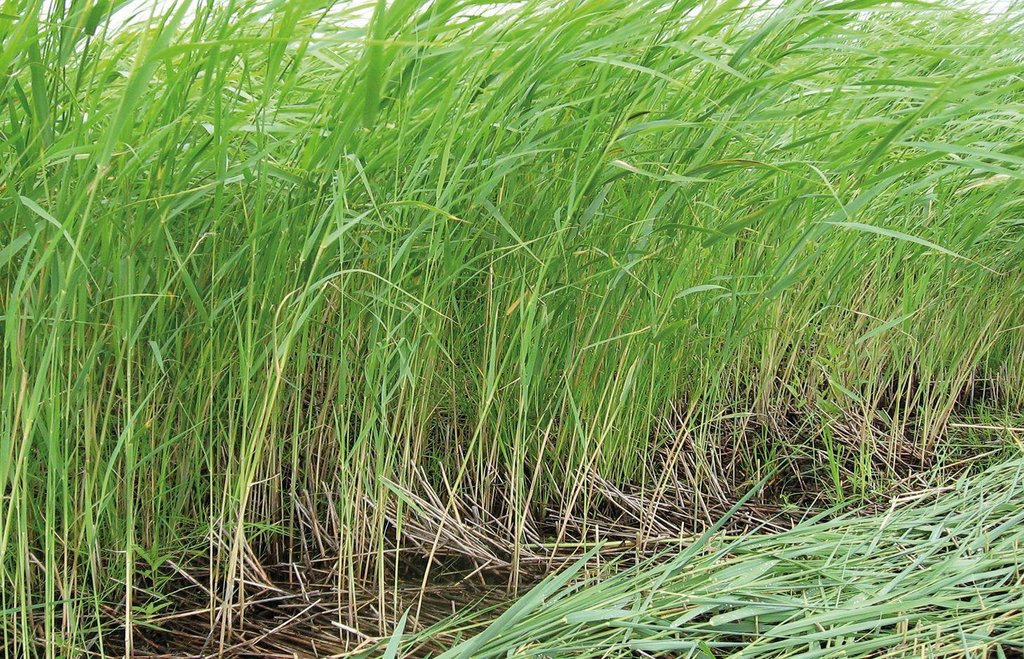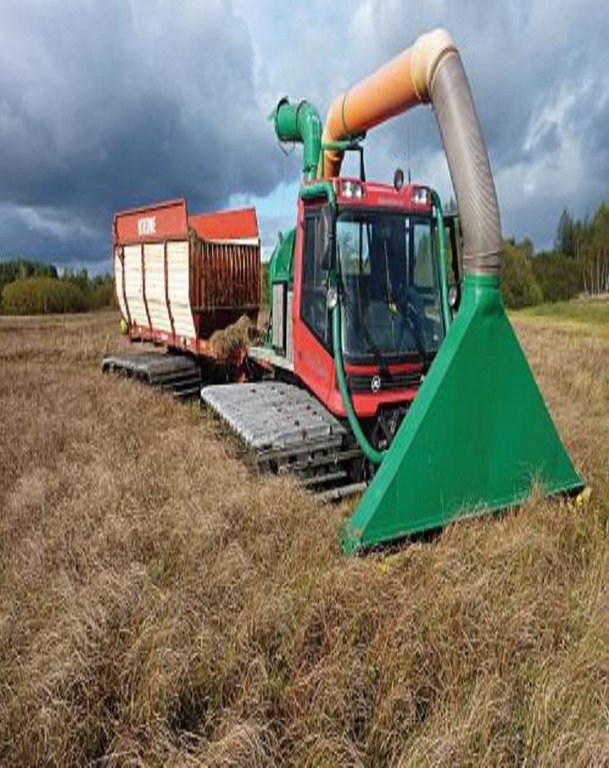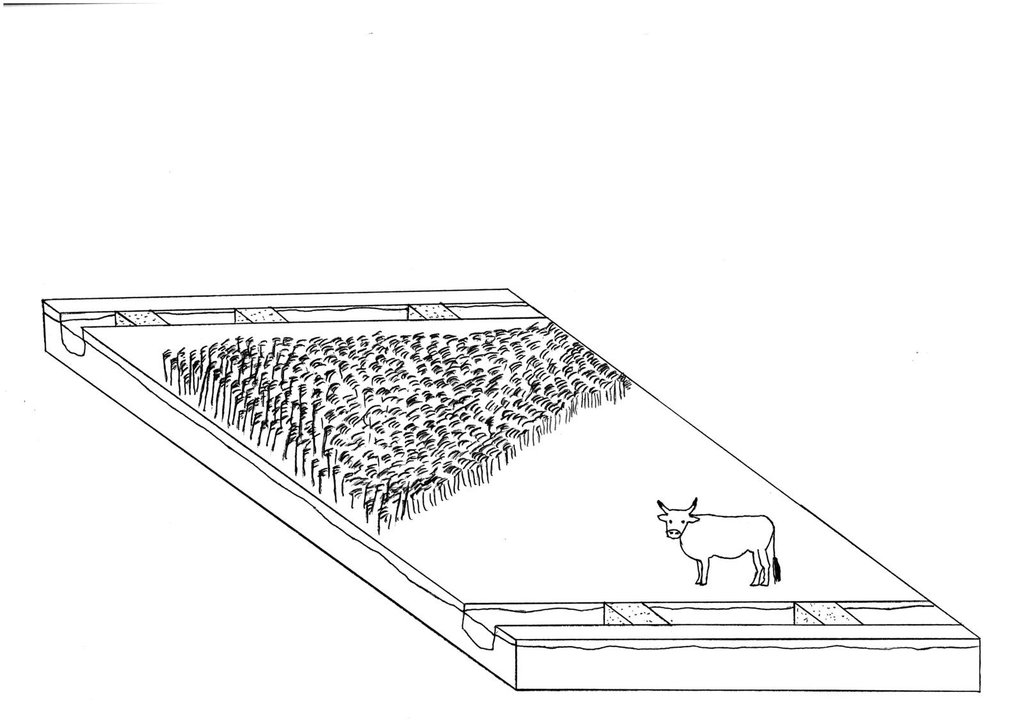Adapted management of organic soils [Герман]
- Шинийг нээх:
- Шинэчлэх:
- Эмхэтгэгч: Johanna Fick
- Хянан тохиолдуулагч: –
- Хянагчид: Fabian Ottiger, David Streiff, Alexandra Gavilano
technologies_1697 - Герман
Бүлгүүдийг үзэх
Бүгдийг дэлгэх Бүгдийг хаах1. Ерөнхий мэдээлэл
1.2 Технологийг үнэлэх, баримтжуулах ажилд хамаарах мэдээлэл өгсөн хүмүүс, байгууллагуудын холбоо барих мэдээлэл
ГТМ мэргэжилтэн:
Baum Sarah
Thünen Institute of Rural Studies
Герман
Технологи баримтжуулах/үнэлэх ажилд дэмжлэг үзүүлсэн төслийн нэр (шаардлагатай бол)
Book project: Making sense of research for sustainable land management (GLUES)Технологи баримтжуулах/үнэлэх ажилд дэмжлэг үзүүлсэн төслийн нэр (шаардлагатай бол)
Climate Change - Land Use Strategies (CC-LandStraD / GLUES)Технологи баримтжуулах/үнэлэх ажилд дэмжлэг үзүүлсэн байгууллага(ууд)-ын нэр (шаардлагатай бол)
Thünen Institute (Thünen Institute) - Герман1.3 ВОКАТ-аар баримтжуулсан өгөгдлийг ашиглахтай холбоотой нөхцөл
Эмхэтгэгч болон гол мэдээлэгч хүн(хүмүүс) WOCAT аргачлалаар баримтжуулсан мэдээллийг ашиглахтай холбоотой нөхцлийг хүлээн зөвшөөрсөн:
Тийм
1.5 ГТМ Арга барилын Асуулга (ууд) руу хандах (ВОКАТ ашиглан баримтжуулсан)
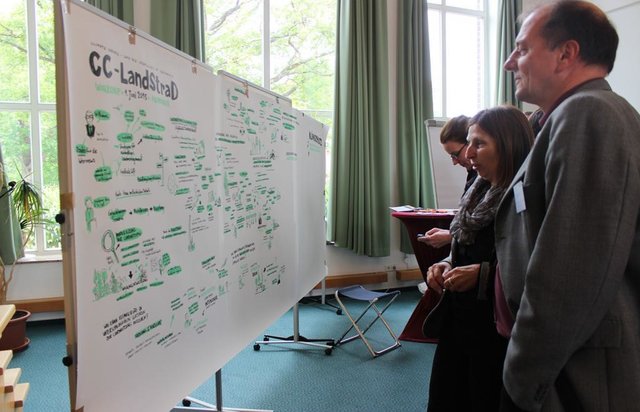
Open dialogue platform on sustainable land management [Герман]
Establishing a dialogue platform on sustainable land management which is open to all stakeholders
- Эмхэтгэгч: Johanna Fick
2. ГТМ Технологийн тодорхойлолт
2.1 Технологийн товч тодорхойлолт
Технологийн тодорхойлолт:
Re-wetting of organic soils and following adapted management suitable for wet conditions like extensive grazing land or paludiculture.
2.2 Технологийн дэлгэрэнгүй тодорхойлолт
Тодорхойлолт:
In peat lands, formed over centuries, reducing the ground water level leads to min-eralization: this results in greenhouse gas (GHG) emissions and leaching of dis-solved organic nutrients into adjacent water bodies. Furthermore, drainage leads to the destruction of highly specialized ecosystems. Re-wetting, by removing of drain-age systems (etc.), means the restoration of a higher ground water level which can reduce GHG emissions in the long term. Re-wetting to a water-level of 10 cm below the soil surface is ideal for reducing GHG emissions and preventing peat mineraliza-tion. One prerequisite for re-wetting is that soil degradation and peat mineralization are not too advanced. An adequate water supply must be available. Re-wetting also affects adjacent areas so possible impacts such as flooding of settlements and in-frastructure must be considered.
Purpose of the Technology: Land uses suitable for the soil conditions after re-wetting are extensive grazing, or paludiculture. Paludiculture is the cultivation of wet organic soils by preserving or renewing peat by planting and harvesting specific trees (e.g. alder), reeds and sedges. On fens, alder trees (for wood /biomass production) or plant species grown for their products (e.g. for thatch) or bioenergy, including the common reed, reed canary grass or cat’s-tail, can be cultivated. On peat bogs sphagnum farming as a peat substitute in horticulture, or as a medicinal plant, is possible. The first harvest of the common reed can take place four years post-establishment; thereafter annually. Alternatively, extensive livestock grazing with water buffalo or suitable breeds of cattle like Galloway or Heck has potential for re-wetted land. Year-round grazing is possible with a carrying capacity of up to 0.7 livestock units/ha.
Establishment / maintenance activities and inputs: Apart from avoiding huge amounts of GHG emissions and bringing land into alter-native production, further aims of re-wetting and adapting land use are:
-soil protection (soil structure, water content, peat protection);
-water protection (water quality, buffering / filtering water);
-protection of the landscape’s water regime and material balance (solute transport);
-biodiversity protection (retaining a sensitive ecosystem with specialized/ threatened species); and
-flood protection (organic soils can quickly absorb large amount of water).
There are many advantages for the environment while still creating a (modest) in-come for land users. Unlike most other bioenergy production chains (e.g. maize, rapeseed) which do not have these environmental co-benefits, paludiculture with the common reed can become a sustainable production system.
Natural / human environment: The Altmark region is located on the North German Plain. The region is predomi-nantly characterized by agriculture but has many forests too. Because of the high proportion of grassland, cattle are important. The use of biomass for bioenergy was increasing and many biogas plants were established in the last few years. Fens are mostly located in Altmark-County Salzwedel. Here, the average population density (42.7 inhabitants km2) is relatively low in the German context and the annual precipi-tation of 466mm is also below the overall German average.
2.3 Технологийн гэрэл зураг
2.5 Энэ үнэлгээнд хамрагдсан технологийг хэрэгжүүлсэн улс орон/ бүс нутаг/ байршил
Улс:
Герман
Улс/аймаг/сум:
Germany, Saxony-Anhalt
Байршлын дэлгэрэнгүй тодорхойлолт:
Altmarkkreis Salzwedel and district Stendal (total area of region: 4744 km²)
Тайлбар:
Total area covered by the SLM Technology is 288 km2.
Potential area: 288 km2 (~ 6% of the region). The area stated is the area that is potentially usable for the technology due to available geographical data; requirements: fen (Nieder- und Anmoor), area under agricultural land use, outside of nature protection areas (national parc, nature reserve, FFH area, SPA area, Ramsar). Due to re-wetting restrictions by factors like nowadays water level in the area, settlements etc., the effective area suitable will be lower.
Boundary points of the Technology area: 52.842906; 10.760956
52.351751; 11.858462
52.541514; 12.187856
52.870405; 12.231025
53.050502; 11.633261
2.6 Хэрэгжсэн хугацаа
Байгуулсан тодорхой оныг мэдэхгүй бол баримжаа хугацааг тодорхойл:
- <10 жилийн өмнө (саяхны)
2.7 Технологийн танилцуулга
Технологийг хэрхэн нэвтрүүлснийг тодорхойл:
- Туршилт/судалгааны үр дүн
Тайлбар (төслийн төрөл г.м.):
answer refers to re-wetting
3. ГТМ технологийн ангилал
3.2 Технологи нэвтрүүлсэн газрын одоогийн газар ашиглалтын хэлбэр(үүд)
Нэг газр нутгийн хэмжээнд хэрэгжих холимог газар ашиглалт:
Тийм
Газар ашиглалтын холимог тогтолцоог (тарилан/бэлчээр/ой мод) тодорхойл:
- Агро-бэлчээр (тарилан-мал аж ахуйн хослуулсан тогтолцоог хамруулан ойлгоно)

Тариалангийн талбай
- Нэг наст үр тариа
Жилд ургамал ургах улирлын тоо:
- 1
Тодорхойлно уу:
Longest growing period in days: 234Longest growing period from month to month: Spring-autumn

Бэлчээрийн газар
Бэлчээрийн мал аж ахуй:
- Ранч
Амьтдын төрөл зүйл:
- буффало
- cattle
Тайлбар:
Main species: Water buffalo, adapted cattles (e.g. Heck cattle, Galloway)
Major land use problems (compiler’s opinion): Drainage causes mineralization, sagging and reduction of organic matter of organic soils as well as high GHG emissions, disturbed water regimes, destruction of valuable ecosystems and loss of ecosystem services.
Major land use problems (land users’ perception): Long term use of drained organic soils leads to soil degradation and lower productivity. Thus, more fertilizer is needed. Due to sagging of organic soils, ditches and drainages need to be renewed every 10-15 years.
Ranching: Water buffalo, adapted cattles (e.g. Heck cattle, Galloway)
Grazingland comments: extensive grassland use with mowing and/or grazing; or paludiculture (e.g. Common Reed)
Future (final) land use (after implementation of SLM Technology): Grazing land: Ge: Extensive grazing land
Type of grazing system comments: extensive grassland use with mowing and/or grazing; or paludiculture (e.g. Common Reed)
Livestock density: 50-100 LU /km2
3.3 Технологи хэрэгжүүлснээр газар ашиглалтад өөрчлөлт гарсан уу?
Технологи хэрэгжүүлснээр газар ашиглалтад өөрчлөлт гарсан уу?
- Тийм (Технологи хэрэгжүүлэхээс өмнөх үеийн газар ашиглалтын талаархи асуулгыг бөглөнө үү)

Тариалангийн талбай
- Нэг наст үр тариа
3.4 Усан хангамж
Тайлбар:
Water supply: rainfed, rainfed
3.5 Технологи ГТМ-ийн аль бүлэгт хамаарах вэ
- Ус намгархаг газрын хамгаалал / менежмент
- Re-wetting of organic soils
3.6 Технологийг бүрдүүлэх ГТМ арга хэмжээ

Ургамлын арга хэмжээ
- V2: Өвс ба олон наст өвслөг ургамал
- V5: Бусад

Барилга байгууламжийн арга хэмжээ
- S11: Бусад

Менежментийн арга хэмжээ
- М1: Газар ашиглалтын хэлбэрийг өөрчлөх
- М2: Ашиглалтын менежмент/эрчимийг өөрчлөх
- M3: Байгаль ба нийгмийн орчинд тохируулан зохион байгуулах
Тайлбар:
Main measures: vegetative measures, structural measures, management measures
Specification of other vegetative measures: paludiculture
Specification of other structural measures: removal of drainage system, dykes, etc. allowing rise in groundwater level
Type of vegetative measures: in blocks
3.7 Технологид харгалзах газрын доройтлын төрөл

хөрсний химийн доройтол
- Cn: Үржил шим ба ялзмаг буурах (элэгдлийн шалтгаангүй)

хөрсний физик доройтол
- Pc: Хөрс дагтарших
- Ps: Хөрсний органик үе давхаргын алдрал, гадаргын суулт
- Pu: Бусад үйл ажиллагааны улмаас био-бүтээмжит функц алдагдах

биологийн доройтол
- Bh: Амьдрах орчин доройтох
- Bs: Ургамлын чанар, төрөл зүйл, олон янз байдал буурах

усны доройтол
- Ha: Хуурайшилт
- Hg: Гүний ус / уст үеийн усны түвшин өөрчлөгдөх
- Hq: Гүний усны чанар муудах
- Hw: Ус намгархаг газрын буферлэх буюу хаах чадвар багасах
Тайлбар:
Main type of degradation addressed: Pc: compaction, Ps: subsidence of organic soils, settling of soil, Pu: loss of bio-productive function due to other activities
Secondary types of degradation addressed: Cn: fertility decline and reduced organic matter content, Bh: loss of habitats, Bs: quality and species composition /diversity decline, Ha: aridification, Hg: change in groundwater / aquifer level, Hq: decline of groundwater quality, Hw: reduction of the buffering capacity of wetland areas
Main causes of degradation: soil management (drainage), disturbance of water cycle (infiltration / runoff) (drainage)
Secondary causes of degradation: crop management (annual, perennial, tree/shrub) (ploughing, fertilization)
3.8 Газрын доройтлоос урьдчилан сэргийлэх, сааруулах ба нөхөн сэргээх
Газрын доройтолтой холбоотойгоор Технологи ямар зорилго тавьсан болохыг тодорхойл:
- Газрын доройтлыг бууруулах
Тайлбар:
Main goals: mitigation / reduction of land degradation
4. Техникийн нөхцөл, хэрэгжүүлсэн үйл ажиллагаа, материал ба зардал
4.1 Технологийн техник зураг
Техник тодорхойлолт (техник зургийн тайлбар):
Re-wetting of a fen with adapted agricultural land use afterwards: extensive grazing with cattle and paludiculture in Common Reed production.
Date: 07/2015
Technical knowledge required for field staff / advisors: high
Technical knowledge required for land users: high
Technical knowledge required for planners: high (Re-wetting concerns large areas)
Main technical functions: increase in organic matter, increase / maintain water stored in soil, increase of groundwater level / recharge of groundwater, improvement of water quality, buffering / filtering water
In blocks
Vegetative material: G : grass, O : other
Number of plants per (ha): G: full coverage, O: 5000
Vertical interval within rows / strips / blocks (m): O: 2m
Width within rows / strips / blocks (m): O: 1m
Grass species: Grasses for extensive grassland use
Other species: Paludicultures like Common reed, Reed Canary grass
Slope (which determines the spacing indicated above): ~0%
Gradient along the rows / strips: ~0%
Structural measure: close/chamber ditches for groundwater level rise
Change of land use type: Crop land or intensive grassland to extensive grassland or paludiculture: see 2.5.2.2
Change of land use practices / intensity level: extensification
Layout change according to natural and human environment: Closed and chambered ditches/removed drainage systems: see 2.5.3.2
Зохиогч:
Sarah Baum, Thünen Institute of Rural Studies, Bundesallee 50, D-38116, Braunschweig, Germany
4.3 Бий болгох үйл ажиллагаа
| Үйл ажиллагаа | Хугацаа (улирал) | |
|---|---|---|
| 1. | For fen re-wetting, removal or blocking of drainage systems like ditches, pumping stations, dykes or drainages is necessary. Extent depends strongly on local site conditions! (examples chosen from Landesumweltamt Brandenburg (2004)). | |
| 2. | Extensive grassland or paludiculture | |
| 3. | Extensive grassland: if field is not already used as grassland but as cropland: grassland sowing | July/August |
| 4. | Extensive grassland: natural spread: no input | |
| 5. | Paludiculture: planting Common Reed | Spring |
4.4 Бий болгоход шаардагдсан зардал, хөрөнгийн өртөг
| Зардлын нэр, төрөл | Хэмжих нэгж | Тоо хэмжээ | Нэгжийн үнэ | Зардал бүрийн нийт өртөг | Нийт дүнгээс газар ашиглагчийн төлсөн % | |
|---|---|---|---|---|---|---|
| Хөдөлмөр эрхлэлт | Labour | ha | 1.0 | 300.0 | 300.0 | 100.0 |
| Тоног төхөөрөмж | Machine use | ha | 1.0 | 400.0 | 400.0 | 100.0 |
| таримал материал | Seedling | ha | 1.0 | 2500.0 | 2500.0 | 100.0 |
| Бусад | Removal of drainage | ha | 1.0 | 200.0 | 200.0 | 100.0 |
| Бусад | Ditch filling | ha | 1.0 | 100.0 | 100.0 | 100.0 |
| Бусад | Make-ready and set-up cost | ha | 1.0 | 2500.0 | 2500.0 | 100.0 |
| Технологи бий болгох нийт үнэ өртөг | 6000.0 | |||||
| Технологи бий болгох нийт үнэ өртөг, ам.доллар | 6000.0 | |||||
4.5 Арчилгаа/ урсгал үйл ажиллагаа
| Үйл ажиллагаа | Хугацаа/ давтамж | |
|---|---|---|
| 1. | water level management: weir control ~once a week: efforts depends strongly on local conditions. Control is also necessary when weirs are used to ensure controlled water level. | |
| 2. | extensive grassland: mowing | 2 times per year |
| 3. | extensive grassland: grazing with water buffalo, adapted cattles (e.g. Heck cattle, Galloway) | year round |
| 4. | paludiculture (Common Reed): harvesting | Winter (ideally: frozen ground)/first harvest 4 years after establishment, thereafter annually |
| 5. | management | yearly |
4.6 Арчилгаа/урсгал ажилд шаардагдсан зардал, хөрөнгийн өртөг (нэг жилд)
| Зардлын нэр, төрөл | Хэмжих нэгж | Тоо хэмжээ | Нэгжийн үнэ | Зардал бүрийн нийт өртөг | Нийт дүнгээс газар ашиглагчийн төлсөн % | |
|---|---|---|---|---|---|---|
| Хөдөлмөр эрхлэлт | Labour | ha | 1.0 | 250.0 | 250.0 | 100.0 |
| Тоног төхөөрөмж | Machine use | ha | 1.0 | 600.0 | 600.0 | 100.0 |
| Бусад | Management | ha | 1.0 | 150.0 | 150.0 | 100.0 |
| Технологийн арчилгаа/урсгал үйл ажиллагаанд шаардагдах нийт үнэ өртөг | 1000.0 | |||||
| Технологи арчилах ба урсгал ажлын нийт үнэ өртөг, ам.доллар | 1000.0 | |||||
Тайлбар:
Machinery/ tools: paludiculture: harvest in winter (frozen soil): normal machinery. If soil is not frozen: special machinery: snow groomer (crawler chain) modified as harvester
4.7 Зардалд нөлөөлж байгаа хамгийн чухал хүчин зүйл
Өртөг, зардалд нөлөөлөх гол хүчин зүйл:
Only rough estimates on costs and income can be given due to the very new and innovative technology. The technology is still in the introductory phase at present
5. Байгаль ба нийгмийн нөхцөл
5.1 Уур амьсгал
Жилийн нийлбэр хур тундас
- < 250 мм
- 251-500 мм
- 501-750 мм
- 751-1,000 мм
- 1,001-1,500 мм
- 1,501-2,000 мм
- 2,001-3,000 мм
- 3,001-4,000 мм
- > 4,000 мм
Хур тунадасны талаархи тодорхойлолт/ тайлбар:
Annual rainfall: 500-750 mm, 750-1000 mm, 1000-1500 mm, 1500-2000 mm
250-500mm: This only characterises the Altmark region (average 460mm); more rainfall is possible!
Агро-уур амьсгалын бүс
- чийглэг
- чийглэг
Thermal climate class: temperate. Altmark region
5.2 Гадаргын хэлбэр
Дундаж налуу:
- хавтгай (0-2 %)
- бага зэрэг налуу (3-5 %)
- дунд зэрэг налуу (6-10 % )
- хэвгий (11-15 %)
- налуу (16-30 %)
- их налуу (31-60 % )
- эгц налуу (>60 %)
Гадаргын хэлбэр:
- тэгш өндөрлөг / тал
- нуруу
- уулын энгэр
- дов толгод
- бэл
- хөндий
Өндрийн бүслүүр:
- 0-100 д.т.д. м.
- 101-500 д.т.д. м.
- 501-1,000 д.т.д м.
- 1,001-1,500 д.т.д м.
- 1,501-2,000 д.т.д м.
- 2,001-2,500 д.т.д. м.
- 2,501-3,000 д.т.д. м.
- 3,001-4,000 д.т.д м.
- > 4,000 д.т.д. м.
Гадаргын талаархи тодорхойлолт ба бусад тайлбар:
Altitudinal zone: 0-100 m a.s.l. (this only characterises the Altmark region), 500-1000 m a.s.l., 1000-1500 m a.s.l.
5.3 Хөрс
Хөрсний дундаж зузаан:
- маш нимгэн (0-20 см)
- нимгэн (21-50 см)
- дунд зэрэг зузаан (51-80 см)
- зузаан (81-120 cм)
- маш зузаан (>120 cм)
Өнгөн хөрсөнд агуулагдах ялзмаг:
- их (>3 %)
Боломжтой бол хөрсний бүрэн тодорхойлолт, боломжит мэдээллийг өгнө үү, жишээ нь хөрсний төрөл, хөрсний урвалын орчин/хүчиллэг байдал, катион солилцох чадавхи, азотын хэмжээ, давсжилт г.м.
Soil depth on average: shallow (21-50 cm) (refers to histic layer), moderately deep (51-80 cm), deep (81-120 cm), very deep (> 120 cm)
Soil fertility is very low-low
Soil drainage/infiltration is good
Soil water storage capacity is very high
5.4 Усны хүртээмж ба чанар
Гүний усны түвшин:
гадаргаас
Гадаргын усны хүртээмж:
хангалттай
Усны чанар (цэвэршүүлээгүй):
зөвхөн газар тариалангийн зориулалтаар ашиглах (усалгаа)
Усны чанар, нөөцийн талаархи тайлбар ба бусад тодорхойлолт:
Seasonal fluctuations (surface water): Wet conditions throughout the year.
5.5 Биологийн олон янз байдал
Зүйлийн олон янз байдал:
- Их
Биологийн олон янз байдлын талаархи тайлбар ба бусад тодорхойлолт:
Not high in number but in quality! Highly specified species. Depends on definition of Biodiversity
5.6 Технологи нэвтрүүлсэн газар ашиглагчдын тухай мэдээлэл
Үйлдвэрлэлийн системийн зах зээлийн чиг баримжаа:
- худалдаа наймааны/ зах зээлийн
Хувь хүн эсвэл бүлэг:
- бүлэг / олон нийтийн
Механикжилтын түвшин:
- механикжсан / мотортой
Хүйс:
- эмэгтэй
- эрэгтэй
Газар ашиглагчдын бусад шинж чанарыг тодорхойл:
Population density: 10-50 persons/km2
Annual population growth: negative
Market orientation of production system: nature conservation
Market orientation of cropland production system: Comercial/market (cows for dairy farming and reed sold for bioenergy and thatching)
Market orientation of grazing land production system: Comercial/market (Grazing, mowing; paludiculture )
5.7 Газар ашиглагчийн технологи нэвтрүүлсэн газрын дундаж талбайн хэмжээ
- < 0.5 га
- 0.5-1 га
- 1-2 га
- 2-5 га
- 5-15 га
- 15-50 га
- 50-100 га
- 100-500 га
- 500-1,000 га
- 1,000-10,000 га
- > 10,000 га
5.8 Газар эзэмшил, газар ашиглах эрх, ус ашиглах эрх
Газар өмчлөл:
- төрийн
- нэгдлийн/ тосгон
- NGO
Газар ашиглах эрх:
- хувь хүн
Ус ашиглах эрх:
- хувь хүн
Тайлбар:
Land owners can re-wet their land and manage it suitable for wet conditions afterwards. The state or NGO, for example, can buy land and re-wet it; normally followed by nature protection. This technology can not be done by one land user. It has major impacts off-sites and reflects normally more then one farmer.
6. Үр нөлөө ба дүгнэлт
6.1 Технологийн талбайд үзүүлсэн нөлөө
Нийгэм-эдийн засгийн үр нөлөө
Үйлдвэрлэл
газар тариалангийн үйлдвэрлэл
тэжээл үйлдвэрлэл
тэжээлийн чанар
малын бүтээмж
бүтээмж буурах эрсдэл
үйлдвэрлэлийн газар
газрын менежмент
Усны хүртээмж ба чанар
тариалангийн усалгааны усны хэрэгцээ
Орлого, зарлага
ХАА-н зардал
Тайлбар/ тодорхой дурьдах:
Thorugh extensification
тухайн аж ахуйн орлого
орлогын олон янз эх үүсвэр
Тайлбар/ тодорхой дурьдах:
possibly
эдийн засгийн ялгаат байдал
ажлын хэмжээ
Тайлбар/ тодорхой дурьдах:
Thorugh extensification
Экологийн үр нөлөө
Усны эргэлт/ илүүдэл
усны хэмжээ
усны чанар
гадаргын урсац
гүний усны түвшин / уст давхарга
Хөрс
хөрсний чийг
хөрсөн бүрхэвч
Тайлбар/ тодорхой дурьдах:
In terms of former cropland
хөрс алдагдах
хөрс нягтрах
шимт бодисын эргэлт/ сэргэлт
Тайлбар/ тодорхой дурьдах:
Extensive usage
хөрсний органик нэгдэл/ хөрсөнд агуулагдах карбон
Биологийн олон янз байдал: ургамал, амьтан
ургамлын төрөл, зүйл
амьтны төрөл, зүйл
амьдрах орчны олон янз байдал
Уур амьсгал болон гамшгийн эрсдлийг бууруулах
нүүрстөрөгч ба хүлэмжийн хийн ялгаруулалт
ГТМ хэрэгжихээс өмнөх тоо хэмжээ:
15-30
ГТМ хэрэгжиснээс хойшхи тоо хэмжээ:
0.8
Тайлбар/ тодорхой дурьдах:
Before conserv.: Ca. 15-30 tCO2eq/ha*a quantify (indicate unit) after conserv.: 0-8 tCO2equ/ha*a specify: mean reduction potential peat bogs: 15tCO2equ/ha*a; fens: 30tCO2equ/ha*a
Экологийн бусад үр нөлөө
Value for nature conservation/relevant species
6.2 Технологийн талбайн гадна үзүүлсэн үр нөлөө
хуурай улиралд ашиглах найдвартай, тогтвортой урсац
Тайлбар/ тодорхой дурьдах:
Perhaps
голын адагт үерлэх
газар доорхи ус/голын усны бохирдол
буферлэх / шүүлтүүрийн багтаамж
хөрш зэргэлдээ газарт учирах хохирол
Тайлбар/ тодорхой дурьдах:
Re-wetting is only possible on larger scales
6.3 Технологийн уур амьсгалын өөрчлөлт, цаг агаарын гамшигт үзэгдэлд өртөх байдал ба эмзэг байдал (газар ашиглагчийн бодлоор)
Уур амьсгалын аажим өөрчлөлт
Уур амьсгалын аажим өөрчлөлт
| Улирал | Өсөх эсвэл буурах | Технологи түүний нөлөөг хэрхэн бууруулж байна? | |
|---|---|---|---|
| жилийн дундаж температур | Өсөлт | муу |
Уур амьсгалаас хамаарах аюул (гамшиг)
Цаг уурын гамшигт үзэгдэл
| Технологи түүний нөлөөг хэрхэн бууруулж байна? | |
|---|---|
| орон нутгийн аадар бороо | сайн |
| орон нутгийн салхин шуурга | мэдэхгүй |
Уур амьсгалын гамшиг
| Технологи түүний нөлөөг хэрхэн бууруулж байна? | |
|---|---|
| ган гачиг | муу |
Усзүйн гамшиг
| Технологи түүний нөлөөг хэрхэн бууруулж байна? | |
|---|---|
| усны үер (гол) | сайн |
Уур амьсгалд хамаарах бусад үр дагавар
Уур амьсгалд хамаарах бусад үр дагавар
| Технологи түүний нөлөөг хэрхэн бууруулж байна? | |
|---|---|
| цргалтын хугацаа багасах | сайн |
6.4 Өртөг ба ашгийн шинжилгээ
Бий болгох зардалтай харьцуулахад ямар ашиг өгсөн бэ (газар ашиглагчийн бодлоор)?
Богино хугацаанд эргэн төлөгдөх байдал:
маш сөрөг
Урт хугацаанд эргэн төлөгдөх байдал:
сөрөг
Арчилгаа/урсгал зардалтай харьцуулахад ямар ашиг өгсөн бэ (газар ашиглагчийн бодлоор)?
Богино хугацаанд эргэн төлөгдөх байдал:
маш сөрөг
Урт хугацаанд эргэн төлөгдөх байдал:
сөрөг
Тайлбар:
Depends strongly on subsidies and other incentive mechanisms as well as opportunity costs (regionally different). Further, if re-wetting is not financed by the land user the economic benefit is greater but even less as before re-wetting.
6.5 Технологи нэвтрүүлэлт
Технологи нэвтрүүлсэн хүмүүсээс хэд нь өөрийн хүчээр технологийг хэрэгжүүлсэн бэ, өөрөөр хэлбэл гадны тусламж дэмжлэг авалгүйгээр?
- 0-10%
Тайлбар:
100% of land user families have adopted the Technology with external material support
There is no trend towards spontaneous adoption of the Technology
Comments on adoption trend: There is no increasing trend to adopt the technology as it is not economically attractive for farmer. But for environment groups (NGOs), without an economical interest, this measure can be interesting.
6.7 Технологийн давуу тал/боломжууд
| Эмхэтгэгч, бусад мэдээлэл өгсөн хүмүүсийн өнцгөөс тодорхойлсон давуу тал/боломжууд |
|---|
|
By re-wetting organic soil huge amounts of GHG emissions can be avoided on a relatively small area How can they be sustained / enhanced? Financial incentives for farmers are needed e.g. based on GHG-mitigation potential. Alternatively, areas can be bought by e.g. NGOs or government for re-wetting/ nature protection |
|
Paludiculture on re-wetted soils allows an adapted agricultural land use How can they be sustained / enhanced? Financial incentives (e.g. subside payments) for farmers are needed |
|
Extensive grassland cultivation on re-wetted soils allows an adapted agricultural land use (grazing/mowing) How can they be sustained / enhanced? Financial incentives (e.g. subside payments) for farmers are needed |
| The use of fertilizer and manure inputs leads to pollution of water bodies. The water quality will be enhanced by less fertilizer/manure input through this technology compared to intensive agriculture. |
| Due to the technology, higher water retention, flood prevention and biodiversity can increase compared to use of drained organic soils. |
6.8 Технологийн дутагдалтай/сул тал/аюул болон тэдгээрийг хэрхэн даван туулах арга зам
| Газар ашиглагч нарын тодорхойлсон сул тал/ дутагдал/ эрсдэл | Тэдгээрийг хэрхэн даван туулах вэ? |
|---|---|
| On re-wetted soil land use options are very restricted due to wet soil conditions. | Financial incentives for farmers are needed. |
| Эмхэтгэгч, бусад мэдээлэл өгсөн хүмүүсийн өнцгөөс тодорхойлсон сул тал/ дутагдал/ эрсдэл | Тэдгээрийг хэрхэн даван туулах вэ? |
|---|---|
| High opportunity cost for land users: income from intensive cropland on drained soils is higher than income from re-wetted soils with extensive land use. | The technology could be economically attractive if farmers get financial incentives for applying it (re-wetting and adapted extensive usage). It would become even more attractive if no incentives were paid for e.g. maize production on drained organic soils (those incentives are actually paid if the maize is used for bioenergy production). |
7. Ном зүй ба холбоосууд
7.1 Мэдээлэл цуглуулсан арга/эх үүсвэр
7.2 Ном, хэвлэлийн ишлэл
Гарчиг, зохиогч, он, ISBN:
Bonn A, et al. (2014) Klimaschutz durch Wiedervernässung von kohlenstoffreichen Böden. In: Naturkapital und Klimapolitik-Synergien und Konflikte.
Хаанаас авч болох вэ? Зардал?
Naturkapital Deutschland TEEB DE Report. Technische Universität Berlin Helmholtz-Zentrum für Umweltforschung-UFZ, Berlin, Leipzig
Гарчиг, зохиогч, он, ISBN:
Wichtmann W, Wichmann S (2011) Environmental, Social and Economic Aspects of a Sustainable Biomass Production.
Хаанаас авч болох вэ? Зардал?
Journal of Sustainable Energy & Environment, Special Issue (2011):77-81
7.3 Холбогдох мэдээллийн интернет холбоос
URL:
http://www.duene-greifswald.de/de/projekte.php_enim.php
URL:
http://www.naturkapital-teeb.de/publikationen/projekteigene-publikationen.html
URL:
http://daten.ktbl.de/feldarbeit/home.html
URL:
https://www.stmelf.bayern.de/idb/default.html
URL:
ttps://www.google.de/search?q=Leitfaden+zur+Renaturierung+von+Feuchtgebieten+in+Brandenburg.+&ie=utf-8&oe=utf-8&gws_rd=cr&ei=btyoVebdJcGYsAH4tpWoCA
Холбоос ба модулууд
Бүгдийг дэлгэх Бүгдийг хаахХолбоосууд

Open dialogue platform on sustainable land management [Герман]
Establishing a dialogue platform on sustainable land management which is open to all stakeholders
- Эмхэтгэгч: Johanna Fick
Модулууд
Модуль байхгүй байна


